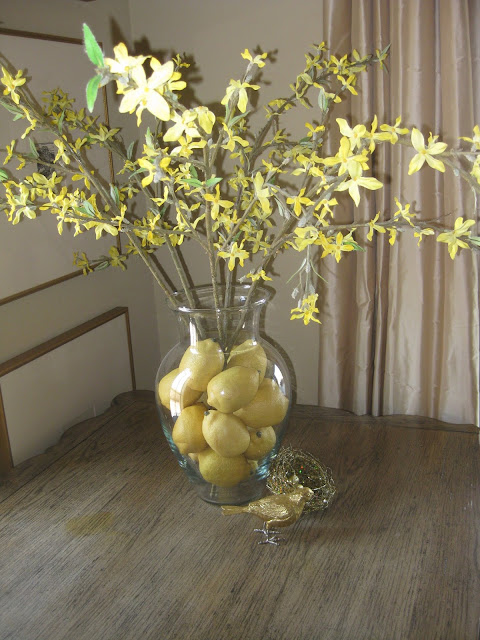lemonade, limoncello, shortbread.... It all started with a gift of three lemons from a generous friend.
These are no ordinary lemons. They are as big as a man's fist!It took a little prep work! We love the sparkling lemonade from World Market and always keep the empty bottles at both houses, mostly filled with cold water to serve at dinner parties.
I decided to try Limoncello. I am in quarantine with time on my hands! I used one lemon for this. (I didn't have much vodka on hand!)
Recipe here: https://www.foodnetwork.com/recipes/giada-de-laurentiis/limoncello-recipe-1916618
I used the other 2 lemons for home made lemonade. I chose to make the simple syrup. I had to use a big stock pot to hold it all!
Recipe here: https://temeculablogs.com/fresh-squeezed-lemonade-recipe/
The lemonade was good!
Then a few weeks later, I wanted to try some recipes with rosemary in them. I had experimented with lavender and basil. Why not lemons and rosemary? So I asked my generous friend for a lemon. This is what she brought!
We have a prolific prostrate rosemary plant! Rosemary is one of Don's favorite herbs. So I tried some recipes with rosemary in them.
My first experiment was making lemon rosemary shortbread. They have a subtle sweetness and are slightly savory.
Recipe here: https://www.twopeasandtheirpod.com/lemon-rosemary-shortbread/
Then onto Rosemary flatbread "crackers." The recipe says to roll these out, or if you want them crispier to use a pasta roller, which is what I did.
Recipe here; https://www.yummly.com/recipe/Crisp-Rosemary-Flatbread-Crackers-1709628
I also tried a Martha Stewart adaptation of parmesan rosemary crackers. Don thought these were more like a savory cookie. They needed to be much thinner, but they taste good!
Recipe here: https://alexandracooks.com/2011/12/30/glogg-parmesan-rosemary-crackers-new-years-eve-in-the-making/
I also have more lemon juice to play with.
Lemons can be fun to decorate with. In fact I am thinking that could be a great Christmas idea in Arizona next year. I will have to find friends with LOTS of lemons!
I could serve lemonade with fancy lemon slices.
Or I could serve lemon sorbet in lemons. I find my electric juicer makes the best lemon "bowls."
Recipe here: https://whatscookingamerica.net/SorbetLemon.htm
Perhaps I should have decorated flower arrangements with them.
"While cut flowers
don't last forever, you can extend the length of time you'll enjoy them by
employing a few simple tricks, including adding lemon juice and sugar to the
water, or by lining a vase with lemon slices for visual interest (or, OK, to
sometimes hide the stems). Here's really why you might want to put lemons in
with your flowers.
Reason #1: To make your own flower food.
Often when you purchase a bouquet from the store, it comes
with a little flower feeder packet. This is a combination of three substances:
citric acid, sugar, and an antimicrobial agent. They work together to keep the
cut blossoms going strong. (The citric acid helps open up those stems to allow
water in, the sugar provides carbs, and the antimicrobial prevents fungus
growth inside the vase.)
However, if you are using flowers from your own garden (or
don't get the little packet of feeder), you can make your own mixture to keep
those blossoms happy and looking good. Here's where you have to be careful
about what you read on the internet: neither aspirin nor vinegar will help your
plants.
Instead, make a mixture that duplicates the ingredients in
the little packet. Mix 2 tablespoons of lemon juice (for the citric acid), 1
tablespoon sugar, and 1/4 teaspoon bleach (for the antimicrobial agent) into a
quart of distilled water. The mixture both offers fertilizer for your cut
flowers and opens their stems to water intake. Finally, it helps to reduce the
microbes in your flower water, which slows down the decomposition of the stems.
Reason #2: For visual interest.
Lemon slices are pretty, in and of themselves, yellow and
shiny with juice. Creative folk make use of their decorative qualities by
placing them carefully in a large vase or pitcher. They cut the lemons into
slim slices about 1/3 of an inch thick, then line the inside of the vase with
them.
Do all those lemons make the water too acidic? They might if
they were actually in the flower water. But here's the trick. In order to
accomplish this cool look you use a slender vase inside the larger vase or
pitcher.
Put cut flowers and their water (as well as cut-flower
feeding mixture) into the slender vase. Then place this vase inside the larger
vase or pitcher. The lemon slices get positioned between the two vases. You can
see them from the outside but they are totally independent of the flowers and
water."
Or if you are like me, you might have some plastic lemons in an arrangement!























No comments:
Post a Comment